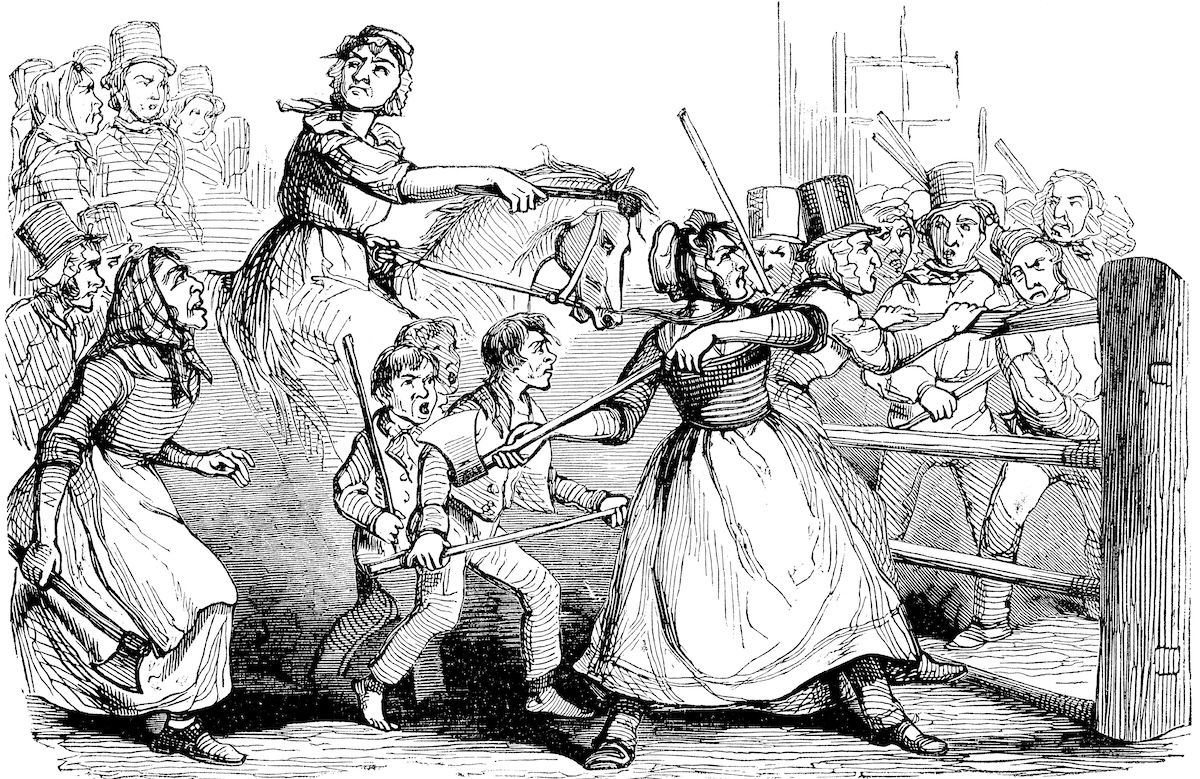The Rebecca Riots: Why Did Wales Rise Up?
Rebecca’s radical rural protests consumed South Wales in the 19th century. Who – or what – was she?

A sustained campaign of attacks blazed across the Welsh counties of Carmarthenshire, Cardiganshire, and Pembrokeshire from 1839. Tenant-farmers and labourers, infuriated by increased charges on road travel that made their working lives and finances even more burdensome, took matters into their own hands by destroying tollhouses, gates, and bars in what became known as the Rebecca riots.
Perhaps the movement’s most recognisable aspect was its enigmatic leader ‘Rebecca’, purported to be taken from Genesis, in which Rebecca is told: ‘Be thou the mother of thousands of millions, and let thy seed possess the gate of those which hate them.’ She was represented during protests by a participant in costume that combined masculine and feminine signifiers: a gown or petticoat thrown on over work clothes, or an elaborate wig paired with a false beard.







